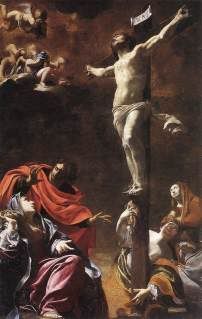MURDER, POLITICS, AND THE END OF THE JAZZ AGE
by Michael Wolraich
Order today at Barnes & Noble / Amazon / Books-A-Million / Bookshop

|
MURDER, POLITICS, AND THE END OF THE JAZZ AGE by Michael Wolraich Order today at Barnes & Noble / Amazon / Books-A-Million / Bookshop |
ROME (April 28, 1) — Emperor Tiberius Caesar Augustus has announced there will be no investigations into the purported torture and crucifixion of convicted heretic and enemy of the state Jesus Christ. In a statement from the Emperor’s office, Tiberius stated that Christ’s crucifixion did not meet the empire’s definition of torture, and that it was time for Roman’s to begin focusing on the future.
“As a general view, I think that we should be looking forward and not backwards,” said Tiberius. “I do worry about this getting so politicized that we cannot function effectively and it hampers our ability to carry out critical national security operations.”
The crucifixion had raised the hackles of many Roman civil liberty leaders, who believed that Christ was punished for expressing his personal religious views and did not threaten national security. Also, many believe that the treatment of Christ went much too far and bordered on evil.
“Jesus Christ was beaten, tortured and ultimately murdered by an evil group of people that believed the laws did not apply to them,” wrote the liberal organization MoveOnius Orgius. “So far there’s been no accountability for the architects of Tiberius’ torture program. We need a full investigation and real consequences for those responsible – it’s the only way to keep this from happening again.”
But Tiberius blanched at this suggestion, mockingly calling Christ the “King of the Jews,” and pointing out that his legal team of Johnius Yooius and Jaius Bybeeius had cleared the so-called “Advanced Crucifixion Techniques” as legal and not against international law.
“Because specific intent is an element of the offense, the absence of specific intent negates the charge of torture. … We have further found that if a defendant acts with the good faith belief that his actions will not cause such suffering, he has not acted with specific intent,” wrote Bybeeius.
Tiberius added that no charges will be brought against judges Sanhedrin, Pontius Pilate, and Herod Antipas, or anyone involved in the beating and ultimate crucifixion of Christ.
“For those who carried out some of these operations within the four corners of legal opinions or guidance that had been provided from Roman legal scholars, I do not think it’s appropriate for them to be prosecuted,” said Tiberius.
Many scribes immediately jumped forward to defend the Emperor’s decision. “Some things in life need to be mysterious,” Pegius Nouninus wrote. “Sometimes you need to just keep walking.”
“The Advanced Crucifixion Techniques memos represented a deliberate, and internally well-debated, policy decision, made in the proper places – the Emperor’s Palace, the intelligence agencies and the Justice Department – by the proper officials,” wrote respected scribe Davidius Broderius. “That way, inevitably, lies endless political warfare. It would set the precedent for turning all future policy disagreements into political or criminal vendettas. That way lies untold bitterness – and injustice.”
One Foxius Newsius Scribe, Seaniues Hannitius has even offered to allow himself to be crucified for charity to show that the practice is “little more than a college prank.”
For his part, Tiberius pointed out that the majority of Romans approved of Advanced Crucifixion Techniques, especially in cases with heretics such as Christ who posed existential threats to the empire. And Tiberius noted that Romans were still in peril from its enemies.
“There is still an enemy out there who wants to attack Rome and Romans,” Tiberius said. “We must not allow our resolve to weaken. We must take the fight to them, lest the response come in the form of scriptures, flaming arrows and far-flung boulders.”
–WKW
Originally posted at William K. Wolfrum Chronicles on April 28, 2009.
Comments
Thanks for re posting this.
by Flavius on Thu, 05/19/2011 - 11:33am
What the bleeding hearts refuse to acknowledge is the wealth of crucial information obtained through advanced crucifixion techniques. In the case of Jesus, a single session of "board-boarding" yielded the name of a co-conspirator, one "Eloi," whom Jesus apparently expected to mount a last-minute rescue.
The Department of Imperial Security believes Eloi (who is still on the loose) and Jesus formed the high command of the dissident group, along with a mysterious third person who was its spiritual inspiration. Since the crucifixion, the group appears to have fragmented, with its followers reduced to just a few hundred million diehards.
by acanuck on Fri, 05/20/2011 - 12:15pm
Using advanced cryptological deciphering techniques placed on parallel processing distributed computers running bifurcative correlation algorithms along with probablistic semantic textual analysis, after a decade's efforts our scientists finally cracked the code:
it was Jesus' brother-in-law Olie.
(Yeah, I know, I know, who knew he even had a sister?)
by Desider on Fri, 05/20/2011 - 12:42pm